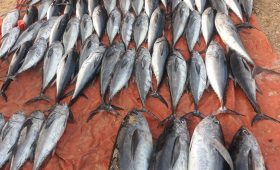Discovering Ntwetwe Pan in Botswana
Ntwetwe Pan, part of the expansive Makgadikgadi Pans in Botswana, offers a unique landscape that captivates travelers with its vast salt flats and diverse wildlife. This remarkable destination provides an opportunity to experience the stark beauty of one of the world’s largest salt pans.
What Makes Ntwetwe Pan Special?
Spanning approximately 2,500 square kilometers, Ntwetwe Pan is a significant feature of the Makgadikgadi Pans. Its expansive, shimmering white surface creates a surreal and otherworldly landscape. This natural wonder is not only a visual spectacle but also a habitat for a range of wildlife. Despite the harsh conditions, species such as zebras, wildebeests, and flamingos are drawn to the pan, offering visitors a chance to witness these animals in a unique setting.
The pan also holds cultural significance for the indigenous communities of Botswana. Understanding the local traditions and history can enrich your visit, providing insight into how people have coexisted with this challenging environment for generations.
When to Visit Ntwetwe Pan
The best time to explore Ntwetwe Pan is during the dry season, from April to October. During these months, the weather is more favorable, and wildlife viewing is at its peak. The dry conditions make the pan accessible, allowing for easier navigation and exploration.
While the wet season, from November to March, brings heavy rains that can flood the pan, it also attracts migratory birds, making it a prime time for birdwatchers. However, travel during this period can be challenging due to accessibility issues.
Getting to Ntwetwe Pan
Reaching Ntwetwe Pan requires careful planning. The nearest major city is Maun, which is well-connected to international airports. From Maun, travelers can hire a 4×4 vehicle for a self-drive adventure or join a guided tour. The journey involves navigating rugged terrain, so hiring an experienced guide is advisable for a safe and enjoyable trip.
Exploring the Pan
Once at Ntwetwe Pan, a 4×4 vehicle is essential for exploration due to the uneven and sometimes slippery surface. It’s crucial to carry extra fuel, water, and food supplies, as facilities are limited. Visitors must adhere to designated tracks to preserve the delicate ecosystem and ensure a responsible visit.
While the pan’s beauty is undeniable, travelers should be prepared for the challenges of remote travel, including limited amenities and the need for self-sufficiency.
Key Facts about Ntwetwe Pan
- Ntwetwe Pan is part of the Makgadikgadi Pans, one of the largest salt flats in the world, covering about 2,500 square kilometers.
- The pan supports a variety of wildlife, including zebras, wildebeests, and flamingos.
- The dry season, from April to October, is the best time to visit for optimal weather and wildlife viewing.
- Maun is the nearest major city with international airport connections.
- Traveling to the pan requires a 4×4 vehicle and navigating challenging terrain.
- Visitors should respect designated tracks to protect the environment and wildlife.




